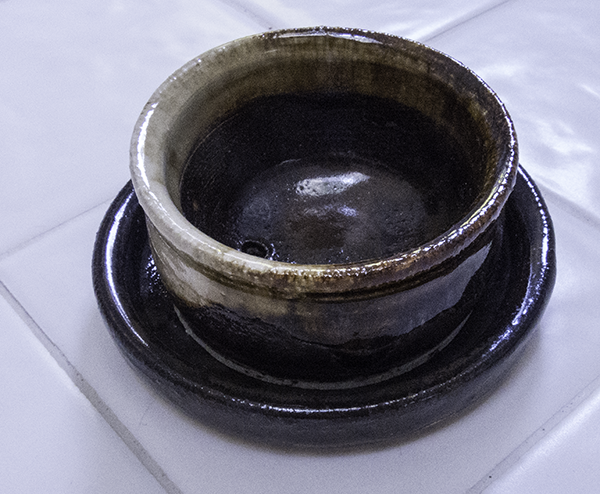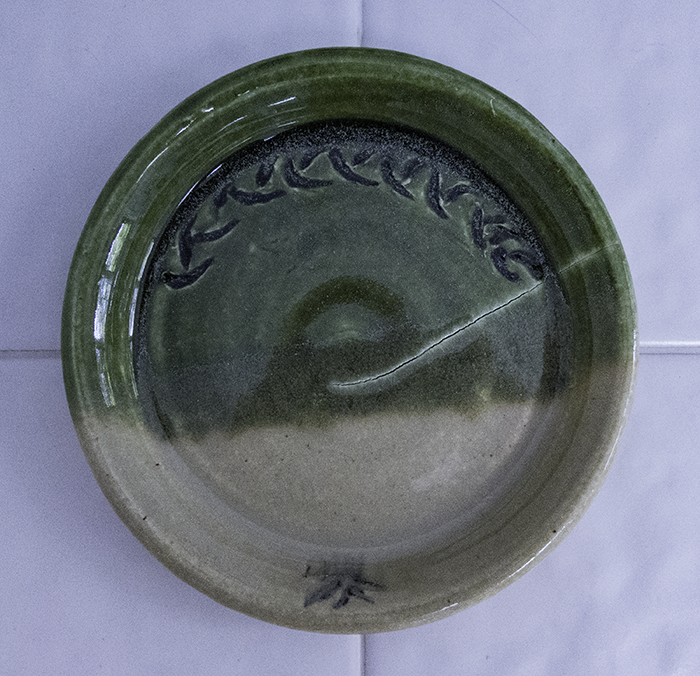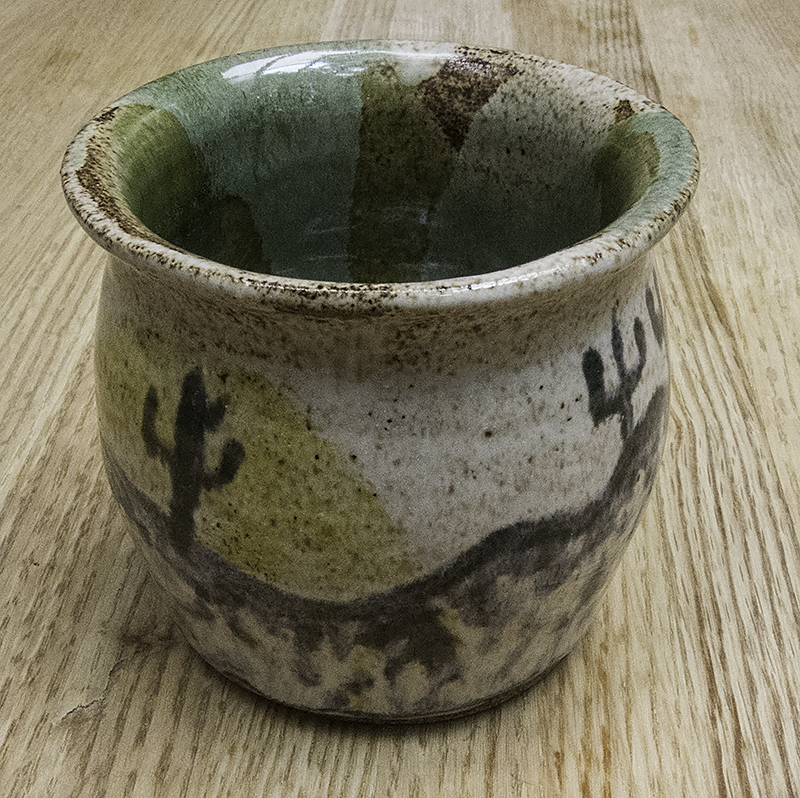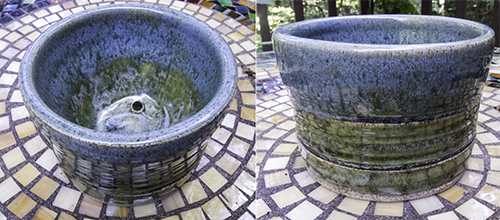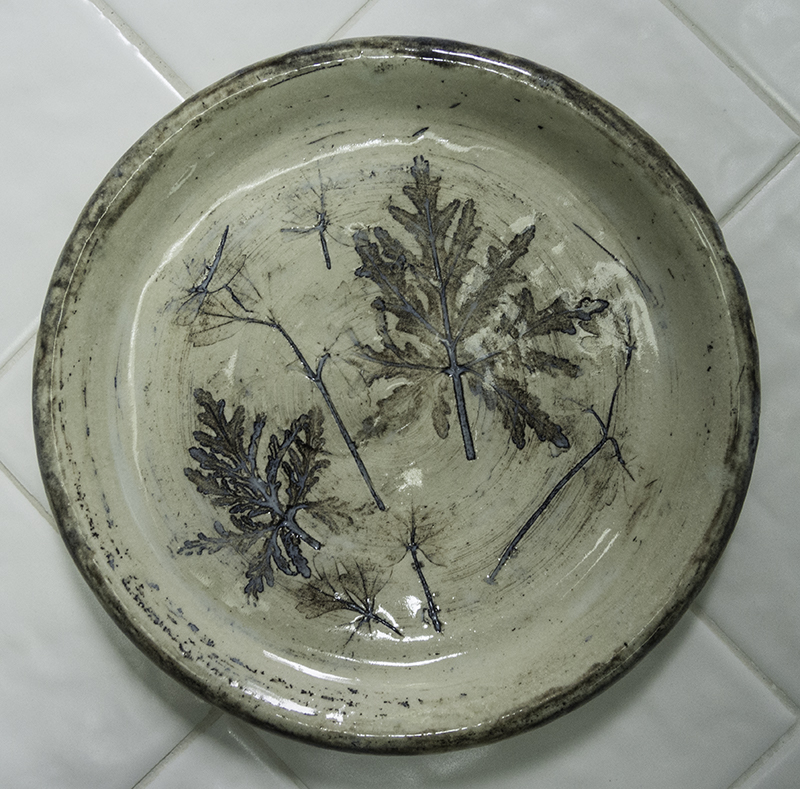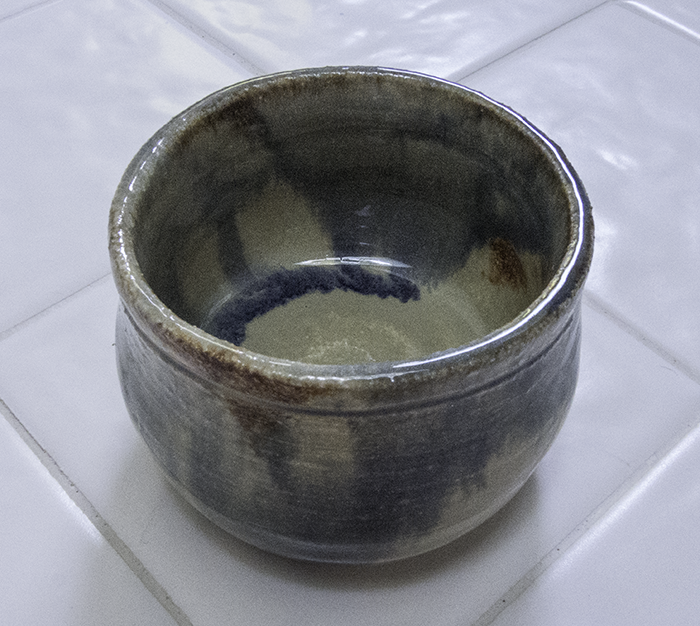
Here is yet one more small pot, this one with no hole. Not sure what I’m going to do with it, but it looks nice. It’s pretty straight and it’s only a little heavy on the bottom–not bad. I think I was getting the hang of pulling the bottom out when I had to stop throwing for the summer. I ran into the same glaze trouble as with the small planter with plate in the last post. I wonder what was going on in that kiln because I dipped both of these pots pretty evenly, although I may have applied a finger print or two. The glaze didn’t stick in a couple of spots and I got the rusty marks you see here. They were rough, so I patched them and put them back in the fire. Everything smoothed out a bit, but I didn’t get rid of the oxidation. I guess that’s the variance of the clay. I was surprised though as this is white clay, not the sandier, gray #50 clay that is more prone to this kind of thing. I’ve made my peace with the rusty spots of interest though. At least they’re not rough anymore.
This will be my last pottery post until the fall. The studio is closed, alas. I have three more projects that I still need to finish. They are at the bisque stage. But that will be a story for another day.


